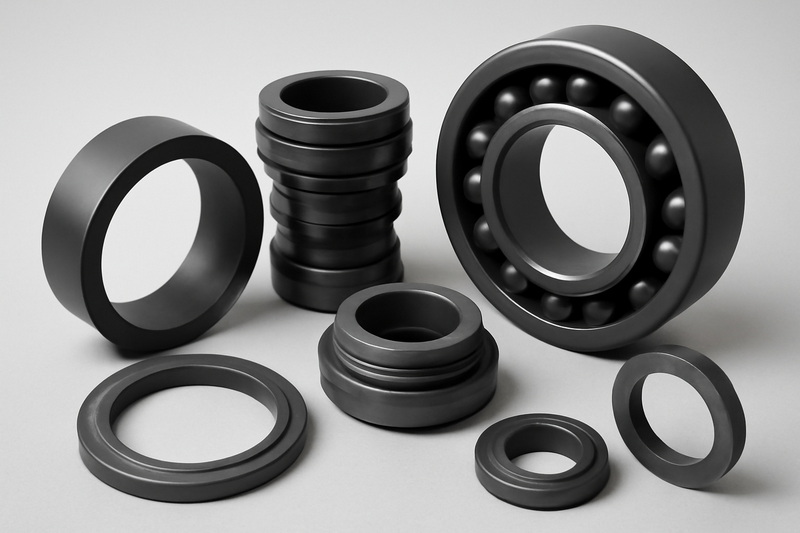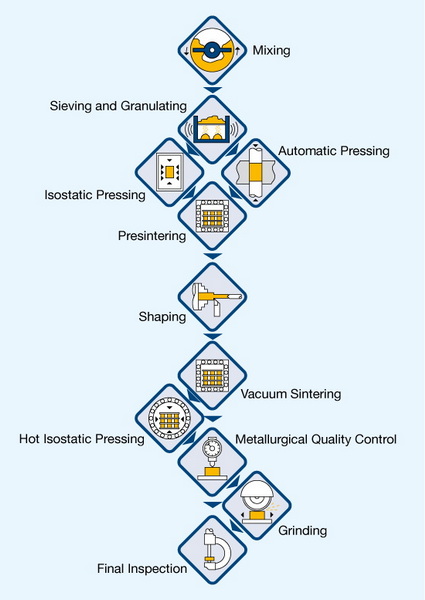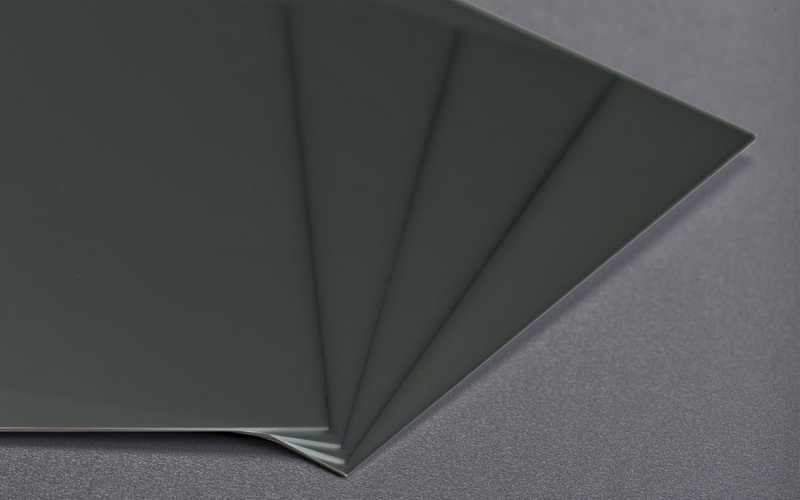Content Menu
● Introduction
● What Is Silicon Carbide?
● Silicon Carbide Production Technology
>> Raw Materials and Preparation
>> The Acheson Process
>> Alternative Production Methods
>> Post-Processing and Shaping
>> Quality Control and Inspection
● Key Properties of Silicon Carbide
● Industrial Applications of Silicon Carbide
>> 1. Metallurgy and Foundry
>> 2. Abrasives and Cutting Tools
>> 3. Electronics and Semiconductors
>> 4. Aerospace and Defense
>> 5. Chemical Processing and Petrochemicals
>> 6. Mining and Construction Tools
>> 7. Green Energy and Environmental Applications
>>> Silicon Carbide in Emerging Technologies
>>> Economic Impact of Silicon Carbide Production
● The Impact of Silicon Carbide Production Technology
>> Advancements in Production Efficiency
>> Customization and Precision Engineering
>> Sustainability and Energy Savings
>> Challenges and Future Directions
● Conclusion
● FAQ: Frequently Asked Questions About Silicon Carbide Production and Applications
>> 1. What are the main methods of silicon carbide production?
>> 2. Why is silicon carbide preferred over traditional materials in high-temperature applications?
>> 3. How does silicon carbide contribute to energy efficiency in industrial applications?
>> 4. What challenges are associated with silicon carbide production technology?
>> 5. In which industries is silicon carbide production technology making the most impact?
Introduction
Silicon carbide (SiC) is a revolutionary material that has transformed multiple industrial sectors through its unique combination of physical, chemical, and electrical properties. As a high-tech enterprise specializing in the research, development, production, and sales of carbide products, understanding the impact of silicon carbide production technology is crucial for driving innovation and maintaining competitiveness in the global market. This article explores the intricate production processes of silicon carbide, its technological advancements, and the profound effects these have on a wide spectrum of industrial applications, including military, metallurgy, petroleum drilling, mining tools, and construction.

What Is Silicon Carbide?
Silicon carbide is a compound of silicon and carbon, renowned for its exceptional hardness, thermal conductivity, and chemical stability. It is second only to diamond in hardness and is widely used as an abrasive, refractory material, and semiconductor. Its ability to withstand extreme environments has made it indispensable in modern industry.
Silicon Carbide Production Technology
Raw Materials and Preparation
The foundation of silicon carbide production lies in high-purity silicon and carbon sources. Silicon is typically derived from silica sand, while carbon comes from petroleum coke or coal tar. The purity of these raw materials directly influences the quality and performance of the final silicon carbide product. Therefore, rigorous purification processes, including chemical treatments and thermal methods, are employed to eliminate impurities and achieve the stringent standards required for advanced industrial applications.
The Acheson Process
The Acheson process is the most widely used method for large-scale silicon carbide production. This batch process involves mixing silica sand and carbon in a graphite furnace and heating the mixture to temperatures around 2,500°C. The intense heat triggers a chemical reaction:
SiO2+3C→SiC+2CO
This reaction forms silicon carbide crystals, which are then extracted, crushed, and processed into various forms such as powders, grains, or shaped components.
Alternative Production Methods
While the Acheson process dominates bulk production, other advanced methods have emerged to meet the demands of high-purity and specialized applications:
- Physical Vapor Transport (PVT): Used for producing high-quality single crystals, particularly for semiconductor wafers. SiC powder is sublimed at high temperatures, and the vapor is redeposited onto a seed crystal.
- Chemical Vapor Deposition (CVD): Involves the reaction of gaseous precursors to deposit thin films or layers of silicon carbide, ideal for electronic devices and coatings.
- High-Temperature Chemical Vapor Deposition (HTCVD): Used for growing SiC boules with precise control over crystal structure and purity.
Post-Processing and Shaping
After synthesis, silicon carbide undergoes several post-processing steps:
- Crushing and Milling: To achieve the desired particle size.
- Purification: Further chemical or thermal treatments to remove residual impurities.
- Shaping: Methods such as extrusion, pressing, and casting are used to form SiC into complex geometries for specific industrial needs.
- Sintering: High-temperature treatment to enhance density and mechanical strength.
Quality Control and Inspection
Quality control is critical in silicon carbide production. Advanced inspection systems, such as confocal tomography and immersion tomography, are used to detect defects like micropipes and dislocations in SiC crystals. These defects can significantly affect the performance and reliability of SiC components, especially in semiconductor and power electronics applications. Early-stage inspection ensures only high-quality material proceeds to the costly wafering and device fabrication stages.
Key Properties of Silicon Carbide
- Extreme Hardness: Nearly as hard as diamond, making it ideal for abrasives and cutting tools.
- High Thermal Conductivity: Efficiently dissipates heat, crucial for high-power electronic devices.
- Chemical Stability: Resistant to acids, alkalis, and corrosive environments.
- Thermal Shock Resistance: Maintains integrity under rapid temperature changes.
- Electrical Properties: Wide bandgap semiconductor, enabling high-voltage, high-frequency, and high-temperature electronic devices.

Industrial Applications of Silicon Carbide
1. Metallurgy and Foundry
Silicon carbide is extensively used in the metallurgy industry as a deoxidizer, refractory material, and for lining furnaces. Its high thermal conductivity and resistance to slag and chemical attack make it ideal for crucibles, kiln furniture, and furnace linings. In steel production, SiC acts as a fuel and alloying agent, improving efficiency and product quality.
2. Abrasives and Cutting Tools
Due to its exceptional hardness, silicon carbide is a preferred material for grinding wheels, sandpapers, and cutting tools. It enables precision machining of metals, ceramics, and composites, reducing tool wear and increasing productivity. The development of advanced silicon carbide production technology has led to abrasives with superior performance and longevity.
3. Electronics and Semiconductors
Silicon carbide's wide bandgap and high thermal conductivity make it a game-changer in the electronics industry. SiC-based power devices, such as MOSFETs and Schottky diodes, operate efficiently at higher voltages, frequencies, and temperatures than traditional silicon devices. This results in smaller, lighter, and more energy-efficient power modules for electric vehicles, renewable energy systems, and industrial motor drives.
4. Aerospace and Defense
In aerospace and military applications, silicon carbide is used for lightweight armor, thermal protection systems, and high-temperature structural components. Its combination of strength, low density, and thermal stability enables the design of advanced components for aircraft, missiles, and space exploration vehicles.
5. Chemical Processing and Petrochemicals
Silicon carbide's resistance to corrosion and thermal shock makes it ideal for components exposed to aggressive chemicals and high temperatures. Applications include heat exchangers, pump seals, nozzles, and reactor linings in chemical plants and petroleum refining.
6. Mining and Construction Tools
Mining and construction industries benefit from silicon carbide's wear resistance and toughness. SiC is used in drill bits, cutting tools, wear plates, and linings for ore buckets and chutes. These components withstand abrasive and impact forces, reducing maintenance costs and downtime.
7. Green Energy and Environmental Applications
Silicon carbide plays a pivotal role in green energy technologies. SiC power devices improve the efficiency of solar inverters, wind turbines, and electric vehicle chargers, contributing to energy savings and reduced emissions. Additionally, SiC filters and membranes are used in water treatment and pollution control systems.
Silicon Carbide in Emerging Technologies
Silicon carbide is increasingly being explored for use in emerging technologies such as quantum computing and advanced sensors. Its unique electrical properties and thermal stability make it a promising material for next-generation devices that require high precision and reliability under extreme conditions.
Economic Impact of Silicon Carbide Production
The growth of silicon carbide production technology has also spurred economic development in regions with manufacturing facilities. It creates high-tech jobs, encourages investment in research and development, and fosters collaborations between academia and industry to push the boundaries of material science.
The Impact of Silicon Carbide Production Technology
Advancements in Production Efficiency
Modern silicon carbide production technology has significantly increased the efficiency and scalability of SiC manufacturing. Innovations such as automated quality control, improved furnace designs, and advanced crystal growth methods have reduced costs and enhanced product consistency.
Customization and Precision Engineering
The ability to tailor silicon carbide's properties through controlled production processes has opened new avenues for customized solutions. Manufacturers can produce SiC components with specific hardness, porosity, or electrical properties to meet the unique demands of various industries.
Sustainability and Energy Savings
Silicon carbide's role in energy-efficient devices and processes directly supports global sustainability goals. By enabling higher efficiency in power electronics, reducing fuel consumption in metallurgy, and extending the lifespan of industrial tools, SiC production technology contributes to resource conservation and lower environmental impact.
Challenges and Future Directions
Despite its advantages, silicon carbide production faces challenges such as high energy consumption, the need for ultra-pure raw materials, and the management of crystal defects. Ongoing research focuses on developing more energy-efficient synthesis methods, recycling processes, and advanced inspection technologies to further enhance the quality and affordability of SiC products.
Conclusion
Silicon carbide production technology stands at the forefront of materials science, driving innovation across a multitude of industries. Its unique properties—extreme hardness, thermal stability, chemical resistance, and superior electrical performance—have enabled the development of advanced solutions in metallurgy, electronics, aerospace, chemical processing, and beyond. As production technologies continue to evolve, silicon carbide will play an increasingly vital role in shaping the future of industrial applications, supporting both economic growth and environmental sustainability.

FAQ: Frequently Asked Questions About Silicon Carbide Production and Applications
1. What are the main methods of silicon carbide production?
The primary methods include the Acheson process (bulk synthesis in electric furnaces), Physical Vapor Transport (PVT) for high-quality crystals, and Chemical Vapor Deposition (CVD) for thin films and coatings. Each method is chosen based on the required purity, crystal size, and application.
2. Why is silicon carbide preferred over traditional materials in high-temperature applications?
Silicon carbide offers superior thermal conductivity, excellent thermal shock resistance, and chemical stability, making it ideal for environments where traditional materials would degrade or fail.
3. How does silicon carbide contribute to energy efficiency in industrial applications?
SiC power devices reduce energy losses in electrical systems, enable higher operating temperatures, and allow for more compact and lightweight designs, leading to significant energy savings and improved system performance.
4. What challenges are associated with silicon carbide production technology?
Challenges include high energy consumption during synthesis, the need for ultra-pure raw materials, and managing crystal defects that can affect device performance. Continuous research aims to address these issues through process optimization and advanced quality control.
5. In which industries is silicon carbide production technology making the most impact?
Silicon carbide is transforming industries such as metallurgy, electronics (especially power semiconductors), aerospace, chemical processing, mining, construction, and green energy, thanks to its unique combination of mechanical, thermal, and electrical properties.














